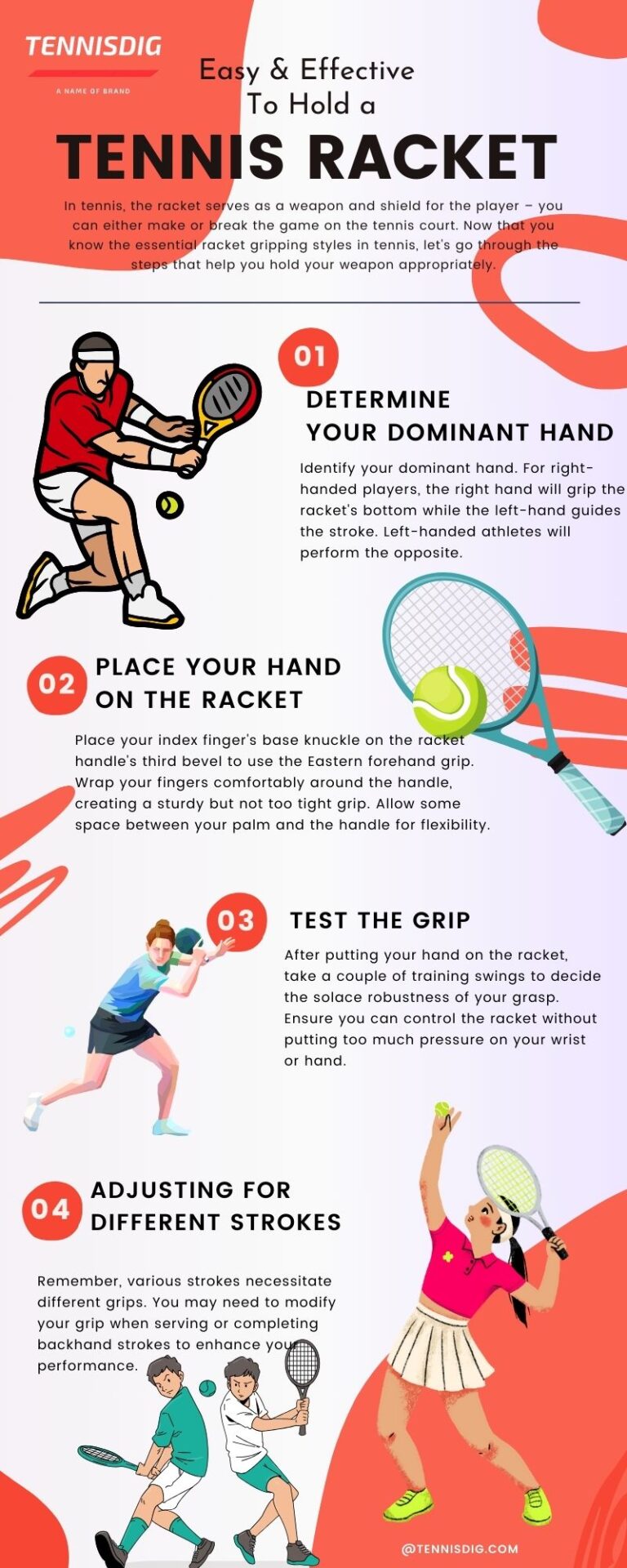Tennis, a sport recognized for its beauty and versatile agility, demands knowledge of the principles and diversified skills. One of the major essentials of playing tennis is figuring out how to hold a tennis racket. It might give off an impression of being a straightforward action. Yet, how you have held the racket can fundamentally impact your performance on the court.
Significance of Racket Grip
Before delving into how to hold a tennis racket, it is essential to comprehend why proper gripping is vital to the game.
Your grip influences the control, power, and accuracy you can apply to the ball. A firm grasp permits you to execute different strokes precisely while diminishing the risk of harm.
What is the Correct Way to Hold a Tennis Racket?
In tennis, you can practice the following basic types of grips efficiently:
Eastern Forehand Grip
The Eastern forehand grip is an essential grip utilized by many players, particularly novices. To establish this grip, position the base knuckle of your index finger on the racket handle’s third bevel. This grip combines power and control, making it excellent for forehand strokes.
Continental Grip
The Continental grip is fundamental for serving, volleying, and finishing exceptional strokes like serves and slices. Put the base knuckle of your index finger on the racket handle’s first bevel. A flexible grasp gives you more command over the ball.
Western Forehand Grip
The Western forehand grasp is more modern and popular among players in a topspin-heavy game. To expert this gripping style, place the base knuckle of your index finger on the fifth or sixth bevel of the racket’s handle. It enables high topspin but may result in less control than the Eastern grip.
How to Hold a Tennis Racket?
In tennis, the racket serves as a weapon and shield for the player – you can either make or break the game on the tennis court. Now that you know the essential racket gripping styles in tennis, let’s go through the steps that help you hold your weapon appropriately.

Step 1: Determine Your Dominant Hand.
Identify your dominant hand. For right-handed players, the right hand will grip the racket’s bottom while the left-hand guides the stroke. Left-handed athletes will perform the opposite.
Step 2: Place Your Hand on the Racket.
Place your index finger’s base knuckle on the racket handle’s third bevel to use the Eastern forehand grip. Wrap your fingers comfortably around the handle, creating a sturdy but not too tight grip. Allow some space between your palm and the handle for flexibility.
Step 3: Test the Grip.
After putting your hand on the racket, take a couple of training swings to decide the solace robustness of your grasp. Ensure you can control the racket without putting too much pressure on your wrist or hand.
Step 4: Adjusting for Different Strokes.
Remember, various strokes necessitate different grips. You may need to modify your grip when serving or completing backhand strokes to enhance your performance.
Final Words
Understanding how to hold a tennis racket is fundamental for an exceptional outcome of this game. Practice, persistence, and learning the complexities of each grasp will work on your gaming. Explore different racket grips regarding a few grasps during instructional lessons to see which is best for your playing style.
Always remember that a correct grip increases performance and reduces the dangers of accidents for yourself and your opponent. So, confidently step into the court, experiment with your grip, and steal all the applause!

